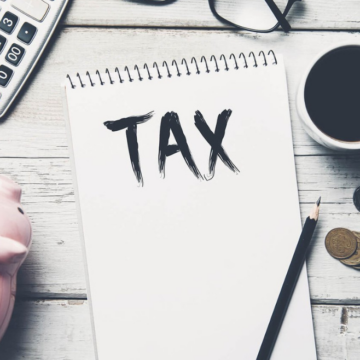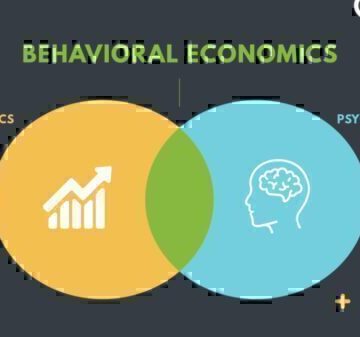So You’ve Decided to File for Bankruptcy. Now What?
Making the decision to file for bankruptcy is a big step. There is so much to consider — evaluating all your options, understanding what bankruptcy will do for you (and what it won’t do), and preparing for the consequences of filing for bankruptcyconsequences of filing for bankruptcy. If you have already made up your mind to go the bankruptcy route, you might be wondering about how bankruptcy works and what steps you need to take.
Step 1: Find a Good Attorney
First, it’s important that you find an attorneyattorney who is experienced with bankruptcy law. There are several ways to find a good bankruptcy lawyer. Sometimes a friend or family member can recommend a bankruptcy attorney. Some people pay for legal counsel through their job. Your state bar association should have directories with bankruptcy attorney information. There are also online directories, such as the National Association of Consumer Bankruptcy Attorneys and the American Board of Certification. If the cost of an attorney (often between $1,250 and $3,500) sounds intimidating to you, keep in mind that some attorneys work pro bono (at little or no charge). The least expensive lawyer may not be your best option. Make sure you are comfortable with the lawyer and ask who you will be dealing with during your case.
Step 2: Conduct a Bankruptcy Counseling Session
Next, the bankruptcy process includes two mandatory credit counseling sessions that must be completed with a counseling agency that has been approved by the U.S. Justice Department. The first round of pre-filing counseling happens before you file bankruptcy paperwork with the courts. During the session, the counselor will discuss your budget and point out the pros and cons of bankruptcy, as well as typical alternatives to bankruptcy. (The second type of counseling occurs in step 5 below.) GreenPath is approved to provide pre-filing bankruptcy counseling. We can explain how bankruptcy works.
Step 3: Filing for Bankruptcy With the Court
After counseling, you file with the court. At this point, the bankruptcy appears on your credit report and creditors must stop calling you or making attempts to collect on your debt. The reason why creditors are prohibited from contacting you is because bankruptcy invokes an “automatic stay,” which stops all legal activities from taking place the moment the bankruptcy is filed.
Step 4: Liquidation or Repayment
Depending on whether you file a Chapter 7 or Chapter 13Chapter 7 or Chapter 13 bankruptcy, the next step may involve liquidating any assets of value to repay your creditors (Chapter 7) or repaying a portion of your debt (Chapter 13). If you file a Chapter 7 and have no assets of large value, it is called a “No Asset Case,” and the courts will not sell your property. Keep in mind that if you have secured debts that you wish to keep, like a house or car, you will need to continue making payments on those debts moving forward. You should inform your attorney of any secured property you wish to keep after the bankruptcy.
The timeline for bankruptcy varies depending on the type of bankruptcy you filed:
- First 15 days: You will need to provide your paperwork to the court. If you filed Chapter 13, this is when the repayment schedule is created.
- Within 30 days: If you filed Chapter 13 you will need to make your first payment to the bankruptcy trustee. Those who filed a Chapter 7 bankruptcy will need to “reaffirm” the debts they want to keep, like a car loan or mortgage.
- After 45 days: The court will hold a Meeting of Creditors to testify under oath the information you provided to the court.
Step 5: Complete a Debtor Education Course
Next is a required education course. You must complete this education before your debts will be discharged. GreenPath is approved to provide both the pre-filing bankruptcy counseling and the debtor education session. The GreenPath version of debtor education can be completed 100 percent online, or by reading a book and speaking with a counselor.
Step 6: Debt Discharge
Finally, eligible debts are discharged. Bankruptcy wipes away your debt and removes your obligation to pay creditors included in the bankruptcy. If the weight of your debt has been causing you to have sleepless nights, the discharge will most likely bring you some relief. Just remember, however, that the discharge isn’t the end of your journey. You now have to begin the process of rebuilding your credit.
Rebuilding After Bankruptcy
Filing for bankruptcy can stay on your credit report for up to 10 years and lower your credit score. This can make it harder to get credit in the future and result in less favorable interest rates.
Because of this, it is important that you establish positive credit behavior to rebuild your credit after a bankruptcy. This includes paying your creditors on time, opening a secured credit card that reports to the credit bureaus, and keeping your balances low.
Experian, one of the credit reporting bureaus, offers helpful information on how bankruptcy impacts your credit report.
Disclaimer: This article is not to be used for legal advice. Speak with an attorney if you have specific questions about your situation.
GreenPath Financial Service
Free Debt Counseling
Take control of your finances, get tailored guidance and a hassle-free budgeting experience. GreenPath offers personalized advice on how to manage your money.










